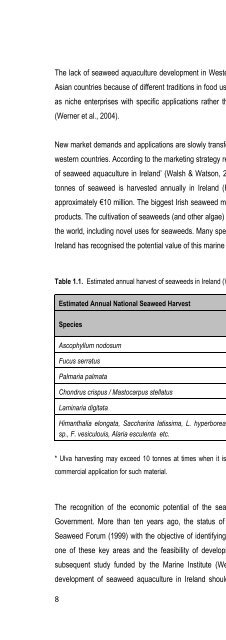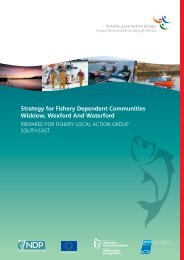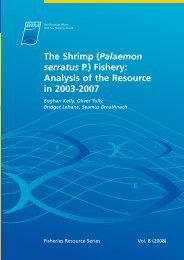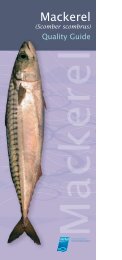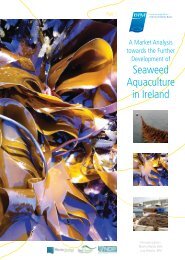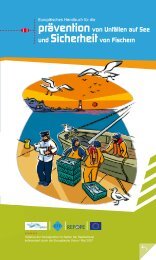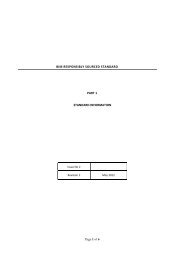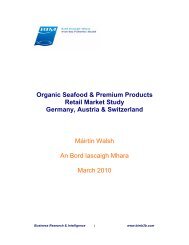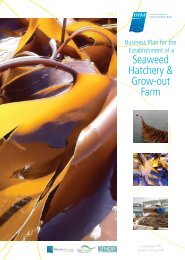Cultivating Palmaria palmata - Bord Iascaigh Mhara
Cultivating Palmaria palmata - Bord Iascaigh Mhara
Cultivating Palmaria palmata - Bord Iascaigh Mhara
Create successful ePaper yourself
Turn your PDF publications into a flip-book with our unique Google optimized e-Paper software.
The lack of seaweed aquaculture development in Western countries is largely due to a smaller demand than in<br />
Asian countries because of different traditions in food use. Seaweed cultivation in Europe has tended to develop<br />
as niche enterprises with specific applications rather than as operations for mass production of a commodity<br />
(Werner et al., 2004).<br />
New market demands and applications are slowly transforming the seaweed sector in Europe as well as in other<br />
western countries. According to the marketing strategy report, „A Market Analysis toward the further development<br />
of seaweed aquaculture in Ireland‟ (Walsh & Watson, 2011) and the FAO (2010a), between 25500 and 29500<br />
tonnes of seaweed is harvested annually in Ireland (Fig. 1.3 and Table 1.1), and the industry is valued at<br />
approximately €10 million. The biggest Irish seaweed markets are for agricultural, food and cosmetics/therapies<br />
products. The cultivation of seaweeds (and other algae) has recently become the focus of much research across<br />
the world, including novel uses for seaweeds. Many species with commercial potential have been identified, and<br />
Ireland has recognised the potential value of this marine resource.<br />
Table 1.1. Estimated annual harvest of seaweeds in Ireland (Walsh & Watson, 2011).<br />
8<br />
Estimated Annual National Seaweed Harvest<br />
Species<br />
Annual Harvest<br />
(tonnes)<br />
Ascophyllum nodosum 25,000<br />
Fucus serratus 200<br />
<strong>Palmaria</strong> <strong>palmata</strong>


